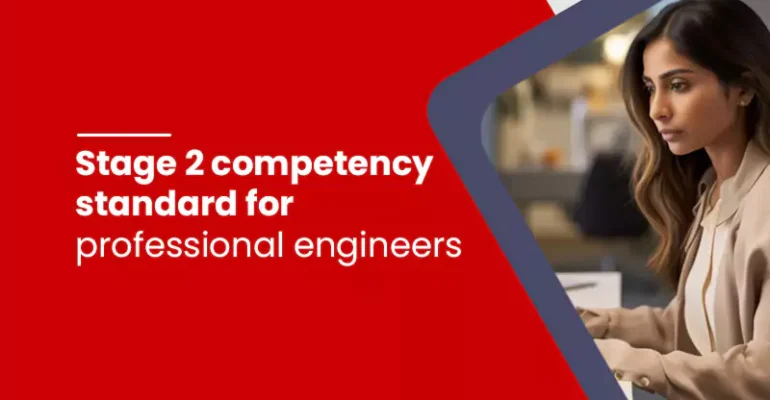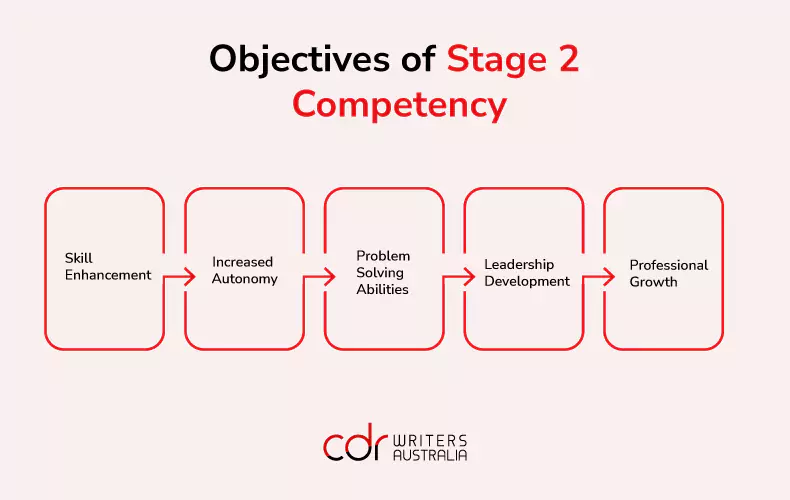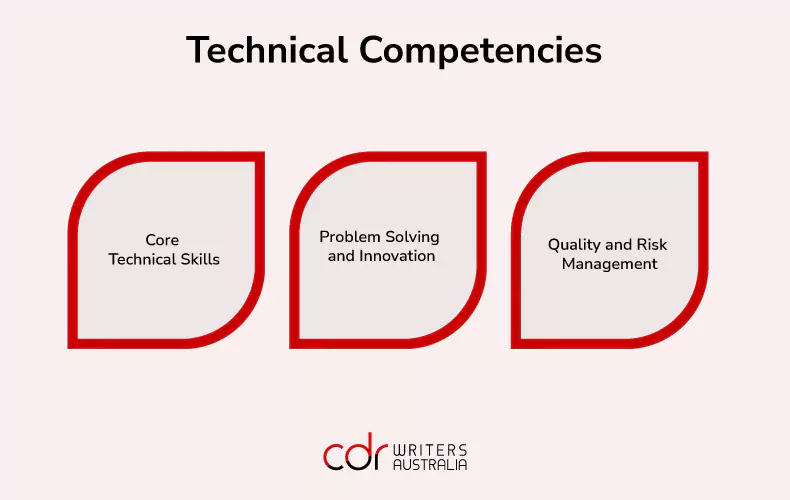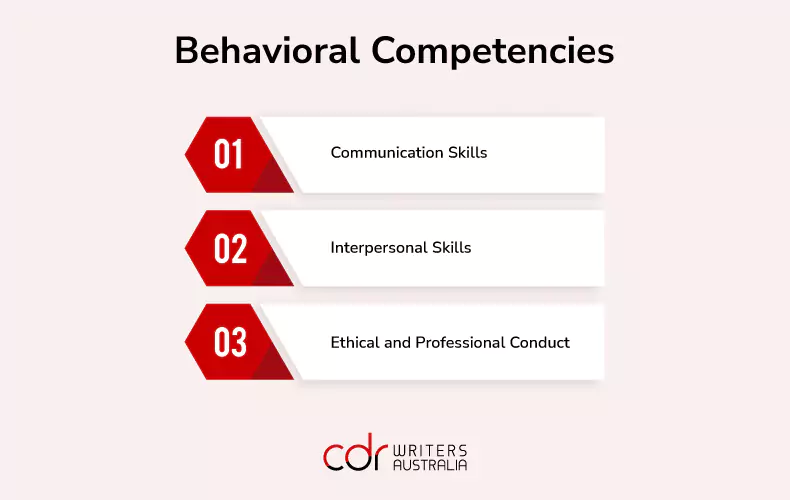Stage 2 Competency Standard for Professional Engineers

Stage 2 Competency Standard for Professional Engineers
Stage 2 Competency is like reaching a new level in your professional journey. It’s where you go from knowing the basics to really mastering your skills. Think of it as leveling up in a video game. At this stage, you’re not just good at what you do; you’re great. You can handle more complex tasks, make important decisions on your own, and even lead others. In this section, we’ll explore what Stage 2 Competency is all about, why it’s important, and how you can keep growing in your career.
🔑: Key Highlight
-
- Introduction to Stage 2 Competency
- Competency Areas
- Assessment and Evaluation
- Development and Training
- Documentation and Reporting
Introduction to Stage 2 Competency
Overview of Stage 2 Competency
Stage 2 Competency represents a critical phase in professional development where individuals advance from foundational skills and knowledge (acquired during Stage 1) to a more proficient and specialized level of expertise. This stage is often characterized by the application of advanced concepts, a higher degree of autonomy, and the ability to manage more complex tasks and responsibilities. Individuals at this stage are expected to demonstrate a comprehensive understanding of their field, apply their skills in real world scenarios, and contribute to innovation and improvement within their domain.
Objectives of Stage 2 Competency

The primary objectives of Stage 2 Competency include:
- Skill Enhancement: To build upon foundational skills and knowledge, moving towards more advanced and specialized competencies.
- Increased Autonomy: To enable professionals to work independently, make informed decisions, and take on greater responsibilities.
- Problem-Solving Abilities: To develop critical thinking and problem-solving skills that allow individuals to tackle complex challenges and devise innovative solutions.
- Leadership Development: To foster leadership capabilities, including the ability to manage teams, projects, and resources effectively.
- Professional Growth: To support continuous professional growth and prepare individuals for higher-level roles and responsibilities within their career path.
Importance of Stage 2 Competency in Professional Development
Stage 2 Competency is crucial for several reasons:
- Career Advancement: Achieving Stage 2 Competency is often a prerequisite for career progression, enabling individuals to move into senior roles and leadership positions.
- Organizational Impact: Professionals at this stage can make significant contributions to their organizations by driving improvements, leading projects, and mentoring junior colleagues.
- Personal Development: It encourages continuous learning and personal growth, helping individuals to stay current with industry trends and technological advancements.
- Marketability: Enhanced competencies make professionals more competitive in the job market, increasing their employability and opportunities for career advancement.
- Quality and Excellence: By advancing to Stage 2 Competency, individuals help maintain high standards of quality and excellence within their profession, benefiting both their organizations and the broader industry.
Also, Check Out: Stage 1 Competency Standard for Professional Engineers. 🔔👈👈
Competency Areas
Technical Competencies
Technical competencies refer to the specific knowledge and skills required to perform jobrelated tasks effectively. This includes expertise in particular technologies, methodologies, or scientific principles relevant to the professional field. These competencies ensure that individuals can apply their technical knowledge to solve complex problems, innovate within their domain, and maintain high standards of quality and safety in their work.
Behavioral Competencies
Behavioral competencies encompass the interpersonal and intrapersonal skills that influence how individuals interact with others and conduct themselves professionally. These include communication, teamwork, adaptability, and ethical behavior. Behavioral competencies are crucial for fostering a positive work environment, enhancing collaboration, and ensuring that professionals act with integrity and respect in all situations.
Managerial Competencies
Managerial competencies involve the skills and abilities required to effectively lead and manage teams, projects, and organizational resources. This includes strategic planning, decisionmaking, project management, and financial oversight. Managerial competencies enable individuals to guide their teams towards achieving organizational goals, manage resources efficiently, and ensure the successful execution of projects and initiatives.
Let’s dive deeper into the above 3 competencies one-by-one:
Technical Competencies

Core Technical Skills
Advanced Knowledge in [Specific Field]
Definition: Possessing a thorough and deep understanding of the specific theories, principles, technologies, and practices within a particular professional domain.
Application: Professionals leverage this knowledge to solve complex problems, innovate, and make informed decisions. It includes both academic knowledge and practical expertise.
Examples: For an engineer, advanced knowledge might include mastery of specific engineering principles, software tools, and industry standards. It might consist of advanced medical knowledge, diagnostic techniques, and patient care protocols for a healthcare professional.
Application of Technical Principles
Definition: The ability to apply theoretical knowledge and principles to practical situations and tasks in the workplace.
Application: This involves using established methodologies, tools, and techniques to carry out tasks effectively and efficiently. It includes the design, implementation, testing, and maintenance of systems or processes.
Examples: An IT professional might apply technical principles to develop a new software application. A biochemist might apply laboratory techniques to conduct experiments and analyze results.
Problem Solving and Innovation
Analytical Thinking
Definition: The ability to systematically break down complex issues into smaller, more manageable parts to understand them better and make informed decisions.
Application: This involves gathering and evaluating data, identifying patterns and relationships, and drawing logical conclusions. Analytical thinking is crucial for troubleshooting, optimizing processes, and strategic planning.
Examples: An analyst might use statistical methods to interpret market data. An engineer might analyze the root cause of a mechanical failure.
Creativity and Innovation
Definition: The ability to generate new ideas, approaches, and solutions to problems. It includes thinking outside the box and developing innovative methods to improve processes and outcomes.
Application: Professionals use creativity to design new products, streamline operations, and enhance services. Innovation often involves taking calculated risks and exploring uncharted territories.
Examples: A product designer might create a revolutionary new gadget. A business strategist might develop a novel market entry strategy.
Quality and Risk Management
Quality Assurance
Definition: Ensuring that products, services, and processes meet predefined standards and requirements through systematic monitoring and evaluation.
Application: This involves implementing quality control measures, conducting audits, and continuously improving processes to enhance quality. It includes compliance with industry standards and regulatory requirements.
Examples: A manufacturing company might implement Six Sigma methodologies to improve production quality. A software development firm might use automated testing tools to ensure code quality.
Risk Assessment and Mitigation
Definition: The process of identifying potential risks, analyzing their impact, and developing strategies to manage and mitigate them.
Application: This involves risk identification, assessment, prioritization, and the implementation of mitigation plans. Effective risk management ensures that potential issues are addressed proactively to minimize negative impacts.
Examples: A project manager might conduct a risk assessment for a new project and develop a mitigation plan to address potential delays. A financial analyst might identify investment risks and recommend strategies to minimize financial exposure.
Learn More: Everything you need to know about Skill Assessment from Engineers Australia. 💡💡✅
Behavioral Competencies

Communication Skills
Effective Written Communication
Definition: The ability to convey information clearly and concisely in written form.
Application: This involves using appropriate language, grammar, and style to ensure that the message is easily understood by the intended audience. It includes writing emails, reports, proposals, and other professional documents.
Examples: A manager writing a comprehensive project report that clearly outlines progress and issues. A customer service representative responding to customer inquiries with clear and helpful information.
Effective Oral Communication
Definition: The ability to articulate ideas and information verbally in a clear, concise, and persuasive manner.
Application: This includes speaking confidently in meetings, presentations, and one-on-one conversations. It involves active listening and the ability to adapt the message to different audiences.
Examples: A salesperson presenting a new product to potential clients. A team leader facilitating a productive meeting by clearly communicating goals and expectations.
Interpersonal Skills
Teamwork and Collaboration
Definition: The ability to work effectively with others to achieve common goals.
Application: This involves contributing to team activities, respecting diverse perspectives, and building positive working relationships. Successful teamwork requires coordination, communication, and cooperation.
Examples: A project team working together to meet a tight deadline. A cross-functional team collaborating on new product development.
Conflict Resolution
Definition: The ability to manage and resolve disagreements in a constructive manner.
Application: This involves identifying the underlying issues, facilitating open communication, and finding mutually acceptable solutions. Effective conflict resolution helps maintain a positive and productive work environment.
Examples: A manager mediating a dispute between team members. A mediator helping two departments resolve a resource allocation conflict.
Ethical and Professional Conduct
Adherence to Ethical Standards
Definition: The commitment to following ethical guidelines and standards in professional conduct.
Application: This includes understanding and applying ethical principles, maintaining confidentiality, and ensuring fairness and honesty in all professional activities.
Examples: An accountant ensuring all financial reports are accurate and comply with regulations. A healthcare professional maintaining patient confidentiality.
Professional Integrity
Definition: The quality of being honest and having strong moral principles in professional conduct.
Application: This involves being trustworthy, and reliable, and maintaining a high level of professionalism. It includes owning up to mistakes, being accountable, and acting in the best interest of the organization and stakeholders.
Examples: A manager who takes responsibility for a failed project and works to rectify the issues. An employee who consistently meets deadlines and delivers quality work.
Also, Check Out: Engineers Australia Fees For Skills Assessment.🔔💸💸
Managerial Competencies
Leadership and Management
Strategic Planning
Definition: The process of defining an organization’s direction and making decisions on allocating resources to pursue this strategy.
Application: This involves setting long-term goals, analyzing market trends, assessing internal capabilities, and developing plans to achieve these goals. Strategic planning ensures that the organization remains focused and aligned with its mission and vision.
Examples: An executive team might develop a five year strategic plan to expand into new markets. A department head might create a strategy to increase operational efficiency and productivity.
Decision Making
Definition: The ability to make informed and effective choices by analyzing information, considering alternatives, and anticipating outcomes.
Application: Involves critical thinking, evaluating risks and benefits, and making choices that align with organizational goals. Good decision-making skills are essential for resolving issues, capitalizing on opportunities, and guiding teams.
Examples: A manager deciding on a new software solution for the team. A CEO making a decision on a major investment or acquisition.
Project Management
Project Planning and Execution
Definition: The process of defining project objectives, creating detailed plans, and ensuring that project activities are completed on time, within scope, and within budget.
Application: Involves setting project goals, developing timelines, assigning tasks, and monitoring progress. Effective project planning and execution ensure that projects meet their objectives and deliver value.
Examples: A project manager developing a detailed plan for a new product launch. A construction manager overseeing the execution of a building project.
Resource Management
Definition: The efficient and effective deployment and allocation of an organization’s resources when and where they are needed.
Application: Involves managing human resources, materials, and equipment to ensure that they are used optimally. Resource management is crucial for maximizing productivity and minimizing waste.
Examples: A manager scheduling team members’ work shifts to ensure coverage. An IT manager allocating server space and computing resources to various projects.
Financial Management
Budgeting and Cost Control
Definition: The process of planning, monitoring, and controlling financial resources to achieve organizational objectives.
Application: Involves creating budgets, tracking expenditures, and implementing cost-saving measures. Effective budgeting and cost control help organizations maintain financial health and allocate resources efficiently.
Examples: A financial manager preparing an annual budget for the organization. A project manager tracking project expenses to ensure they stay within budget.
Financial Analysis
Definition: The examination of financial data to understand the financial performance of an organization and to inform decision-making.
Application: Involves analyzing financial statements, performance metrics, and market conditions to make recommendations for improvement. Financial analysis helps organizations make informed investment, operational, and strategic decisions.
Examples: An analyst reviewing quarterly financial reports to identify trends and areas for improvement. A CFO evaluating the financial viability of a new business venture.
Assessment and Evaluation
Methods of Assessment
Self Assessment
Self-assessment is a reflective process where individuals evaluate their own skills, performance, and achievements. This method encourages employees to take an active role in their professional development by critically analyzing their strengths and areas for improvement.
By setting personal goals and identifying development needs, self-assessment fosters self-awareness and accountability. It can be implemented through structured tools such as self-evaluation forms, informal reflections and journals.
Peer Assessment
Peer assessment involves colleagues evaluating each other’s performance and contributions. This approach leverages the insights of team members who observe each other’s work closely. Peer assessment promotes a culture of feedback and collaboration, allowing for diverse perspectives on performance.
It can help to identify areas that might be overlooked by supervisors and encourage mutual respect and support among team members. Methods include peer review forms, feedback sessions, and 360-degree feedback systems.
Evaluation Criteria
Performance Metrics
Performance metrics are specific, quantifiable measures used to evaluate an individual’s or team’s effectiveness and productivity. These metrics can be both quantitative, such as sales figures, project completion rates, and customer satisfaction scores, and qualitative, like quality of work and adherence to company values.
By setting clear performance metrics, organizations can objectively assess whether employees are meeting expectations and contributing to organizational goals. These metrics provide a basis for recognizing achievements and identifying areas needing improvement.
Feedback Mechanisms
Feedback mechanisms are processes and tools used to provide employees with information about their performance. Effective feedback mechanisms are essential for continuous improvement and professional development.
They can include formal methods like performance appraisals and review meetings, as well as informal methods like day-to-day verbal feedback and coaching sessions. Constructive feedback helps reinforce positive behaviors, correct deficiencies, and guide employees toward achieving their goals. Regular feedback fosters open communication and helps build trust between employees and management.
Development and Training
Training Programs
Workshops and Seminars
Workshops and seminars are structured learning events conducted in a classroom or group setting, typically led by subject matter experts. These sessions provide participants with focused instruction on specific topics or skills relevant to their roles or professional development objectives.
Workshops and seminars often include interactive elements such as discussions, group activities, and hands on exercises to enhance learning and knowledge retention.
Online Courses
Online courses, also known as e-learning or web-based training, deliver educational content through digital platforms accessible via the internet. These courses offer flexibility and convenience, allowing individuals to learn at their own pace and schedule.
Online courses cover a wide range of topics and can include multimedia elements such as videos, quizzes, and interactive simulations. They are particularly useful for self directed learners and professionals seeking to acquire new skills or knowledge remotely.
Mentorship and Coaching
Role of Mentors
Mentors are experienced professionals who provide guidance, support, and advice to less experienced individuals (mentees) in a particular field or organization. Mentors share their knowledge, insights, and expertise to help mentees navigate their careers, develop key competencies, and achieve their professional goals.
Mentorship relationships can take various forms, including formal programs, one on one partnerships, or peer mentoring networks.
Benefits of Coaching
Coaching involves one-on-one interactions between a coach and a coachee aimed at improving performance, developing skills, and achieving personal and professional growth objectives.
Coaches provide support, encouragement, and constructive feedback to help individuals overcome challenges, leverage their strengths, and reach their full potential. Coaching relationships focus on setting goals, identifying obstacles, and implementing action plans to drive positive change and continuous improvement.
Continuous Learning
Lifelong Learning Strategies
Lifelong learning refers to the ongoing process of acquiring new knowledge, skills, and competencies throughout one’s life and career.
Lifelong learners actively seek out opportunities for growth and development, both formal and informal, to stay relevant in their fields and adapt to changing environments. Strategies for lifelong learning include setting learning goals, seeking feedback, networking with peers, and embracing curiosity and experimentation.
Professional Development Plans
Professional development plans outline an individual’s goals, objectives, and actions for enhancing their skills, knowledge, and abilities in their current role or advancing their career. These plans typically include a self-assessment of strengths and areas for improvement, the identification of learning priorities, and a timeline for achieving goals. Professional development plans may involve a combination of training programs, mentorship opportunities, self-study initiatives, and experiential learning experiences tailored to the individual’s needs and aspirations.
Documentation and Reporting
Recordkeeping Requirements
Documentation of Competencies
Recordkeeping of competencies involves maintaining detailed documentation of the skills, knowledge, and abilities possessed by employees within an organization. This documentation typically includes records of training certifications, educational qualifications, job-related achievements, and performance evaluations. By documenting competencies, organizations can effectively track the capabilities of their workforce, identify areas for development, and make informed decisions regarding assignments, promotions, and training opportunities.
Reporting Procedures
Reporting procedures outline the process by which competency-related information is communicated within the organization. This includes establishing protocols for collecting, analyzing, and disseminating competency data to relevant stakeholders. Reporting procedures may involve regular reports to management, departmental updates, or presentations to teams. Clear reporting procedures ensure transparency, accountability, and alignment with organizational goals, allowing decision-makers to utilize competency information to support strategic planning and resource allocation.
Review and Updating Competency Records
Regular Reviews
Regular reviews involve scheduled assessments of competency records to ensure accuracy, relevance, and currency. These reviews may occur at predetermined intervals or in response to significant organizational changes such as new projects, restructuring, or advancements in technology. During reviews, competency records are evaluated against established criteria to identify any gaps, discrepancies, or areas requiring updates. Regular reviews help maintain the integrity of competency data and ensure that employees’ skills and qualifications remain current and aligned with organizational needs.
Updating Competency Records
Updating competency records involves making necessary revisions or additions to reflect changes in employees’ skills, knowledge, or job responsibilities. This may include documenting new certifications, training courses completed, job-related achievements, or changes in job roles. Updating competency records is essential for keeping organizational records accurate and up-to-date, enabling managers and HR professionals to make informed decisions regarding talent management, succession planning, and workforce development initiatives. Additionally, updating competency records supports employees in tracking their professional growth and identifying opportunities for further skill enhancement or career advancement.
Conclusion
In conclusion, Stage 2 Competency represents a pivotal phase in professional development, marking a transition from foundational knowledge to advanced expertise. With a focus on technical, behavioral, and managerial competencies, individuals at this stage are equipped to tackle complex challenges, drive innovation, and lead with confidence.
By emphasizing continuous learning, mentorship, and self-assessment, professionals can ensure their skills remain relevant and adaptable in today’s dynamic work environment. Ultimately, Stage 2 Competency not only benefits individuals in their career progression but also contributes to organizational success, fostering a culture of excellence, integrity, and continuous improvement.
FAQs
What are the competency areas associated with Stage 2 Competency?
- Competency areas include technical competencies, behavioral competencies, and managerial competencies.
What are technical competencies?
- Technical competencies encompass specific knowledge and skills required for job-related tasks, ensuring effective problem-solving, innovation, and maintaining quality standards.
What are behavioral competencies?
- Behavioral competencies involve interpersonal and intrapersonal skills such as communication, teamwork, adaptability, and ethical behavior, crucial for fostering a positive work environment and professional conduct.
What are managerial competencies?
- Managerial competencies include leadership and management skills necessary for guiding teams, executing projects, and managing resources effectively.
How are competencies assessed and evaluated?
- Competencies can be assessed through methods such as self-assessment, peer assessment, performance metrics, and feedback mechanisms.

